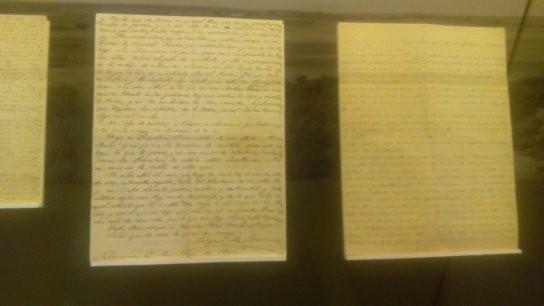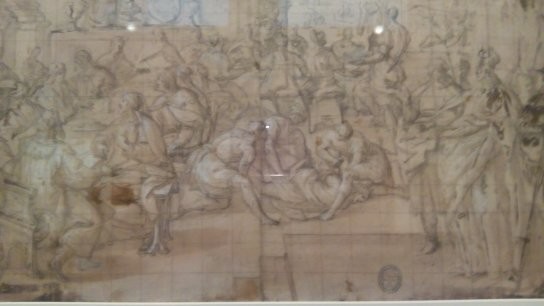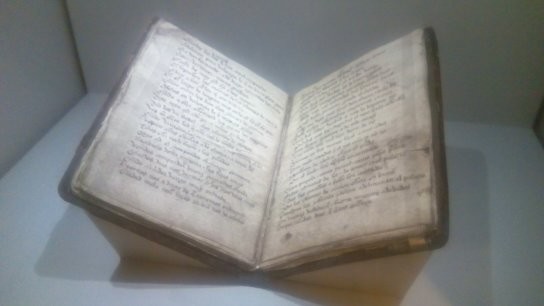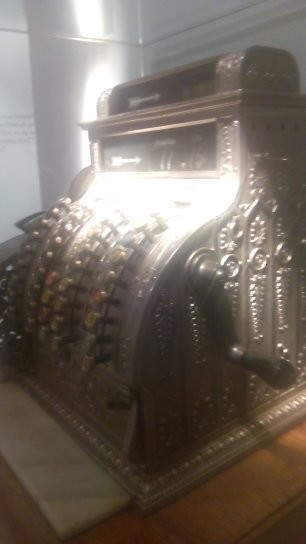I would consider myself to be a person that’s very much inclined towards literature. In Mexico, my school had a library with a wide range of materials from different authors falling under many categories and genres. When I came to Madrid, I only brought one book with me, which is the one that I'm currently reading (Crónicas Marcianas by Ray Bradbury). Upon seeing that I had less than 30 pages left of it, I decided to search for a book store to find my next victim. After browsing a book store and seeing the extortionate prices, I then decided to instead search for a library that would house all my potential future victims: the Biblioteca Nacional de España.
I took my passport and my identity card feeling very determined to later return home with a book borrowed from the Biblioteca Nacional de España. But, if your intention is to go to the library, sit down and read for a short while before taking the book home, you are very much mistaken...

When I entered the library, I was told that it is not like a study space where I could come and sit and read for a while, and I absolutely could not take the library's books home with me. I don't know if that was somewhat of an automatic answer upon hearing my Mexican accent or not, as, according to the library's website, you can be issued three types of membership card: 'Reader', 'Researcher', or 'Library Documents', the latter being limited to professionals only. In all honesty, I don't understand why I couldn't have a membership card if the first two can be obtained by anyone (with the restriction of only reading books from 1958 onwards... I would have been fine with this).
Cost
Entry to the library's museum and to the library itself is free.
How do you get there?
- To get to the library via metro, take Line 4 (brown line) and alight at either Serrano or Colón. If you alight at Colón, the library will be right in front of you upon exit from the station.
- If you are travelling by bus, there are several routes that stop outside the library: 1, 5, 9, 14, 19, 21, 27, 37, 45, 51, 53, 74, 150.
- Finally, if you take the Renfe Cercanías, alight at Recoletos (served by lines C-1, C-2, C-7, C-8, C-10), and, as with the metro, immediately upon from the station, you will find the library.
Temporary and permanent exhibitions
Personally, this exhibition was my favourite. In high school, I had to read 'San Manuel Bueno, mártir' and I fell in love with the author. Seeing that, by sheer luck, it was a temporary exhibition just about him, my heart almost burst out of my chest.
The exhibition was only there from June 9th to September 20th, 2015. Despite being in only a single room of the museum, it was highly recommendable. Many of the letters exhibited are considered to be "unedited" by the museum, and with Unamuno being one of the greatest authors in the Silver Age, the exhibit is closely linked to the culture and identity of Spain.
Some manuscripts of his work were also exhibited, like 'De Fuerteventura a París: diario íntimo de un confinamiento y destierro vertido en sonetos (1924-1925)', 'El otro' and 'El pasado que vuelve'.
This exhibition was a great way to get to know the different facets of his character: the philologist and translator, the discoverer of Spanish-American literature, the secular preacher, the traveller, the writer, and the frustrated playwright. All of this could be enjoyed accompanied by a time line, which could help you to better understand the relationship between these facets and the personal events that marked his life and legacy; a period of exile amongst them.


Vicente Carducho: Theoretical and practical art in the Golden Age
Vicente Carducho was a notable painter from the Golden Age who arrived in Spain from Italy to receive artistic training and work on the decoration of El Escorial monastery (if you are in Madrid, you should go there... it's not very far away, and I've been told that it's architecturally impressive and very much worth seeing).
Carducho increased his prestige in the court by being appointed as the King's official painter. The exhibition started with his first works in El Escorial de Valladolid, his tenure as the King's official painter (he decorated the Royal Palace of El Pardo), his arrival in Madrid, his contract to decorate the cloister at the Monastery of El Pauler, and finally, the nobility and liberality of art in his drawings.
The vast majority of his pieces were done in black pencil, watered down with brownish ink, and white lead on laid paper; in this way, they lack colour and shading, which ultimately gives them a more opaque and serious appearance.
Another thing that caught my attention was the appearance of grid lines in all of his works. I don't know if it would be a kind of guide for the painter... I don't think so because the details and human proportions are all very good.
It didn't take long for this piece to be removed! It was on display in the museum's exhibition from May 29th to September 6th, 2015.

Looking at the architecture: Monumental photography of the nineteenth century
I don't know if this exhibition was my least favourite given that I didn't understand what the photographs were about, but let's just say that I didn't love it. Photographs of buildings and monuments were exhibited with the objective of linking the three disciplines of photography, architecture and engineering together. The exhibit had more than 200 monochromatic photos and it ran from July 3rd to October 4th, 2015.

Permanent exhibitions
At the museum, there are exhibitions of such a high quality that you will get goosebumps whilst looking at them. There were lots of books exhibited that are over two centuries old, like the first editions of some highly important works, like 'Don Quijote de la Mancha' or 'El Cantar del Mío Cid' (shown in the photo below... I have goosebumps, again).


There are several old contraptions like the first machines use to magnetise needles, the first cash registers (made by NRC in 1879), old binding presses, photography exhibitions and interactive areas where you will be able to make use of both audio and video to bring your cultural experience full circle.

The library has a gift shop situated by the entrance to the building with, what we have all been waiting for, books! You will be able to find books that were previously exhibited, take them home and get to know a bit more about Spanish culture!
About my visit to the library itself
Sadly, the library was closed when I visited, but they usually have guided visits that start at 10am. You can ask at reception to be signed up to one, and they will explain a little bit about the history of the library to you.
Are there any other must-see places close by?
- Puerta de Alcalá
- Fuente de Cibeles
- Buen Retiro Park
- The National Museum of Anthropology and the Museum of History of Madrid
- Museo de Cera (Waxworks)
Things to bear in mind:
- It takes around an hour and a half to walk around the entire museum if paying close attention to the content of the three temporary and one permanent exhibitions.
- Flash photography is not permitted.
- The exhibitions and museum are closed on Mondays.
 What to see Madrid,
Madrid,
Spain
What to see Madrid,
Madrid,
Spain






























